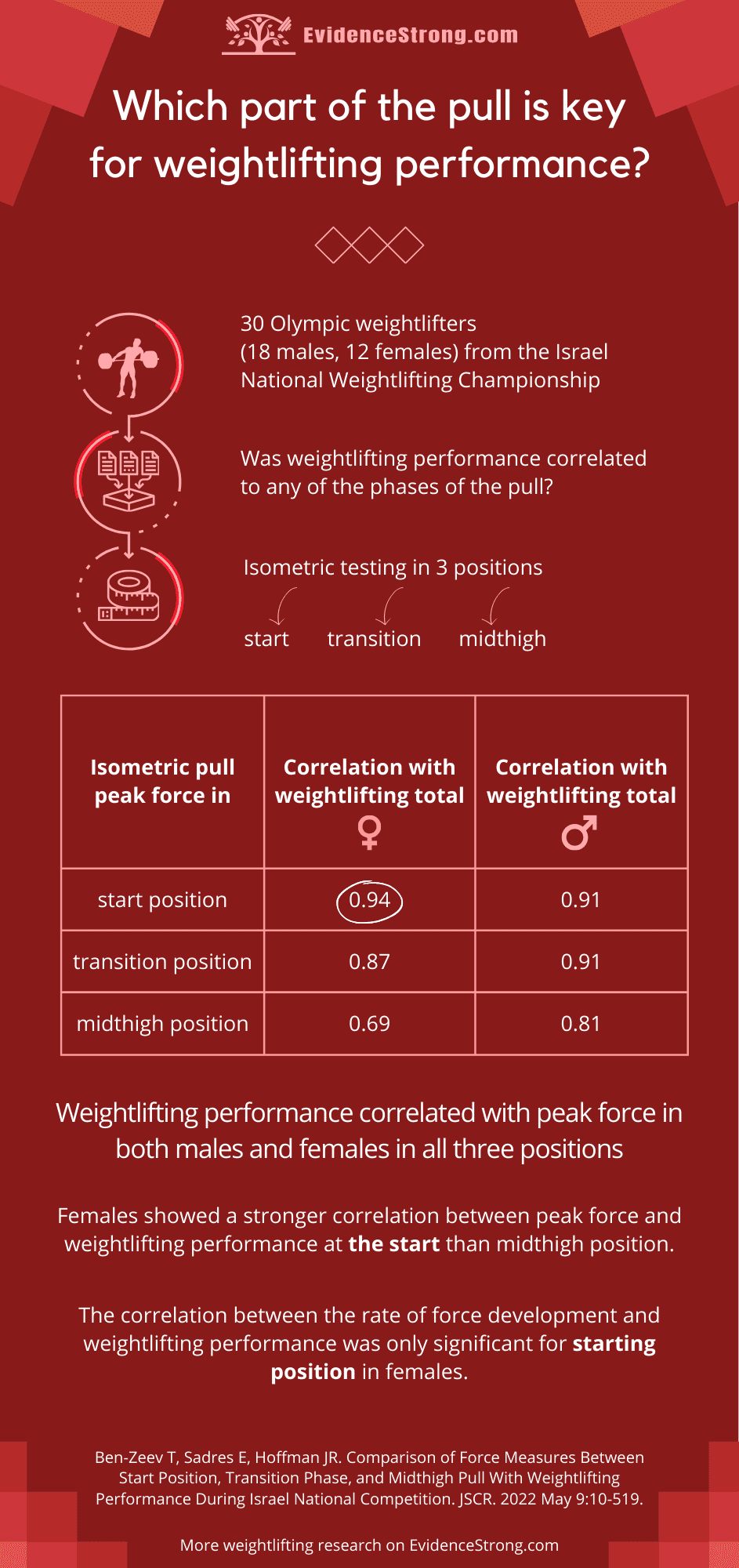Summary of a study looking at the correlation between Olympic weightlifting performance and isometric pulls at the start position, transition phase, and power position.
Who
30 Olympic weightlifters (18 males, 12 females) who performed at the Israel National Weightlifting Championship (have Sinclair points above 200 for male and 120 for female) (Israel)
Design
correlational study between force measures in the isometric testing (in 3 positions) and Olympic weightlifting performance
Outcome measures/tests
- isometric start position pull (ISPP), isometric transition position pull (ITPP), and the isometric midthigh pull (IMTP) (Force-time data measured on force plates)
- performance in the snatch, clean&jerk, and total scores [kg] from the National Weightlifting Championship
Main results
the correlation between the rate of force development and weightlifting performance was only significant for starting position in females (r = 0.67).
peak force correlation with weightlifting performance was significant in both males and females (but stronger in females) in all three positions. Females have shown a significantly stronger correlation between peak force and weightlifting performance in the start position (r = 0.94) than mid-thigh position (r = 0.69).
Take home message
Original article
Ben-Zeev T, Sadres E, Hoffman JR. Comparison of Force Measures Between Start Position, Transition Phase, and Midthigh Pull With Weightlifting Performance During Israel National Competition. The Journal of Strength & Conditioning Research. 2022 May 9:10-519.
You might want to read next
How to assess clean performance?
Best test to monitor Olympic weightlifting performance
Why do you fail your snatches - lessons from best 73kg class Olympic weightlifters
